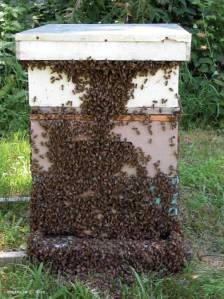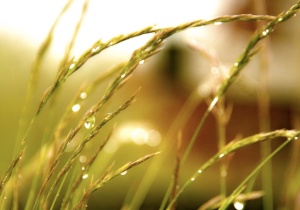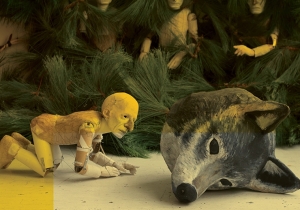For this little experiment, I want to thank Gary McDowell, instructor of a 3-week workshop on lyric prose offered by the Porch Writers’ Collective in Nashville, for inspiration and guidance. McDowell teaches at Belmont University here in Nashville and has written two wonderful books of poetry. His latest foray into the prose poem, “How to Cope with Risk,” came out this summer in the Massachusetts Review.
Ultimate Coffee Quest
In coffee, the French press was once the state of imported art, before coffee houses – or the Dunkin’ Donuts rage (and not counting Cuban coffee, a potent, thick espresso you could get from a food truck in Miami). Then, ma and pa started coffee shops. Someone had convinced these progressive entrepreneurs to invest in expensive machines marketed with talk of bean savvy, roast expertise, “old countries,” and home grown care. And espresso was born in America, Pete’s and Starbucks, selling not only espresso, but the ultimate beans, treasure hunted amongst Peruvian shamans who led llama expeditions to the plateau of the micro-climate that, etc. And you could be educated by someone standing near a big roasting machine about right temperatures and successive roastings and tastings – the age of micro-coffees.
Throughout these changes, the aficionado could sit with French press and a few essentials – the measured, stainless steel stirring spoon, for example – and there in this dawn ritual, commune with eternity.
As America’s “productivity” numbers climbed, this ritual morphed into multi-tasking to the comforting tune of precise, punctured automation, in pre-prepared units that sound like salt shakers and look like creamers from a diner. Or Denny’s.
If you want to be an “early adopter” or even stay up with the times, have an open mind. Try new things because, for example, what if there is a more quintessential cup of coffee out there than the quintessential one enjoyed today…
Note to self: There are always new ways to make coffee.
… and you’ll be sure to get word that there is now some newer way to fully render for your taste buds the experience of freshly ground coffee under your nose – no, really, that same rush, only across your tongue.
Recently, I learned about a method “even better” than French press and decided not to try it. Because I’m now practicing the art of pick one thing and stick with it – something I have never done. Most of my homes have ended up as rentals in far-off states.
Housing Markets
In Rhode Island, houses are moving, but appreciation is slow. Rents, however, are soaring, far exceeding mortgages. In Terre Haute, there is new life everywhere. Once abandonded buildings shine with investment, houses painted the color of second mortgages, yards sculpted like odd jobbers with food on the table. I had once written of the Hautian obsession with the infestation of crows, back when the buildings were latchkey and the elderly broken. And now! Like life after a forest fire, green shoots everywhere. But home appreciation lags. In Nashville, it’s a boom! The quick turnaround, the climbing values, the development… depending on the area. Everywhere is expanding. And values rising, depending on the neighborhood.
Black eye
I caught you in the middle of disappearing. Your black eye so surprising, its old velvet called up from the newly concrete sidewalk, sun white and dazzling. As lawncare mistings lisped about small patches of grass tucked between hostas, over which I assume you presided. Once. It was also your tiny broken appendages, so unruly in their decomposition. So not. Planned, man-carried. So far from the sweat and heat, the squared off boxes of imposed form and great machined churn of cement. You are round, soft as a flower’s heart, dead, and somewhere in your recent history, as the center flew apart, you just leapt, breaking, into the arms of wind.
Black-Eyed Susan
Competitive with other plants, black-eyed Susan grows in just about any kind of soil. She is the “pioneer.” After the construction trucks have pulverized field and grove, the first denizen to pop her head in living color above the bleak will be black-eyed Susan. For the two years of her life, she will dance and smile and offer shelter for the leopard slug as well as the garden centipede. And countless pollenators will love her.
Walking Meditation
Sinking into the dark night of the soul is as easy as turning a corner. You are in a sunlit day, white heat loving the chill from your bones, and the pavement so sure, a ground under your stockinged feet. Perhaps you didn’t plan to walk so far – just going out for a warmer, a break of wild from all that human “community,” and then it drew you – the brilliant day, and the internal pound of stockinged feet meeting surety, and warm. Then you turn the corner. It’s an alley, say. And you feel you are committed by the time the dogs run at their fence barking their chops a few feet from your hips, and the asphalt is a crumble of sad, sand-filled cracks, and wet silt wadis of rainwash sink their damp through socks and feet. Further on, the sun don’t shine, the smell of besotted, week-old fast food, and the clutter of sparrows carping at the spillage from side turned, gashed plastic bags. You are thinking this is not the Inferno, or even Purgatorio, just a case of “a few of my unfavorite things, “ like pre-planned coffee, with a judge always referencing, and humanly subjective.
Until a quite tangible bump on the head, a sharp creech almost simultaneous, but recollected separately, sends the fight or flight along your vegus, like a phone message in a line. (A hard-fought message, hard won lines, interruptive as they were wonderful. The green shoots of the world sprung along those lines. Competition after all.) And after the bump, I followed the still-angry sound, saw some kind of fat, spiteful jay rise past my eyes to perch, turn and jeer, its little tail flipping me off as it peered down menace from a very near strung wire.
Action separated from cause
The use of asphalt rather than Portland cement on a civil road project is more likely to be dictated by the vested interests of the agencies responsible for the projects, and not by practical factors such as cost, speed of implementation, durability of material. In other words, values are not argued, consensus definitions not applied. How soon will we do it again is never weighed against how comfortable the ride. And whether the road will be carrying more traffic and load (highways) or receiving more cornering (streets) is considered on paper, but disregarded in the handshake room. Asphalt is a petroleum product – around 60% of it at least, depending. Cheaper and more flexible than concrete, easier to repair but more often to be repaired. In fact, the roads you drive on as you travel from city to city in the summer, are a gnarled, networked cluster of it depends. Cement, the main ingredient of concrete, is a product – to the tune of 2.5 or 6 billion tons, rather British tonnes – of extreme high temperatures, with a massive carbon footprint, its production plants prime guzzlers of energy for the process of drying, not to mention the “releases of unintentionally produced POPs such as the by-products from wet chemical and thermal processes, polychlorinated dibenzo-p-dioxins/-furans (PCDD/Fs) as well as HCB and PCBs” that international environmental conferences worry about. Less than one part per billion of dioxins and furans is the gold standard. Which sounds to me like 2.5 or 6 tons of toxin poured into the atmosphere per year for the benefit of concrete. And concrete can be, depending, more expensive than asphalt – depending on the price of petroleum, the ratios of the mixtures, and whether you factor longevity into the estimate. Asphalt is the tarring and feathering of rock – or concrete, depending. In Phoenix, they have been experimenting with an asphalt made of used, shredded tires. If you call 30 years of practice an experiment. And they are loving it because, despite the expense of collecting and shredding all those tires, taken on by the city (plus the stigma of being environmental in the state of Arizona), it solves the previously longstanding blight of tire refuse and lasts for over 30 years.





